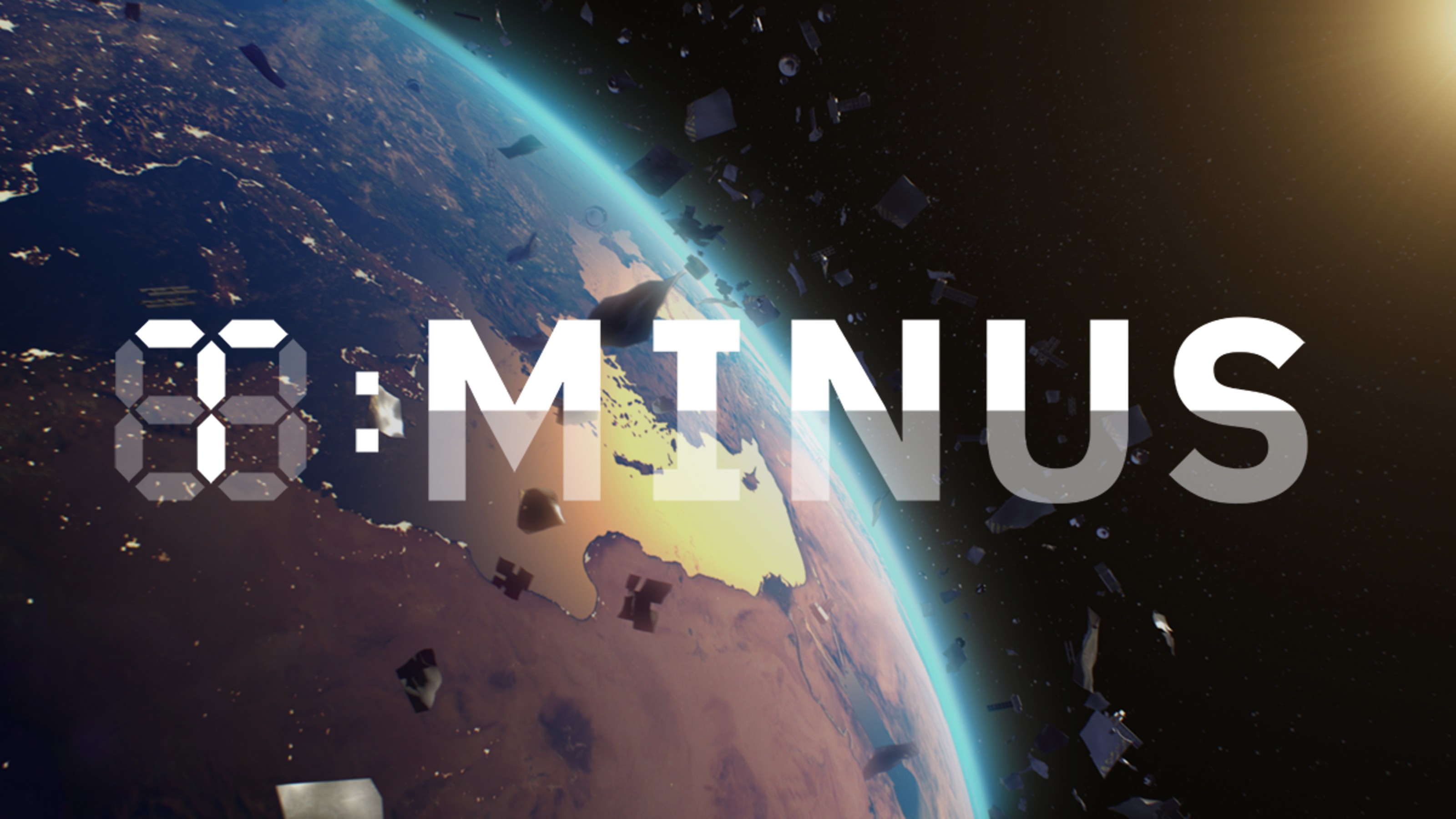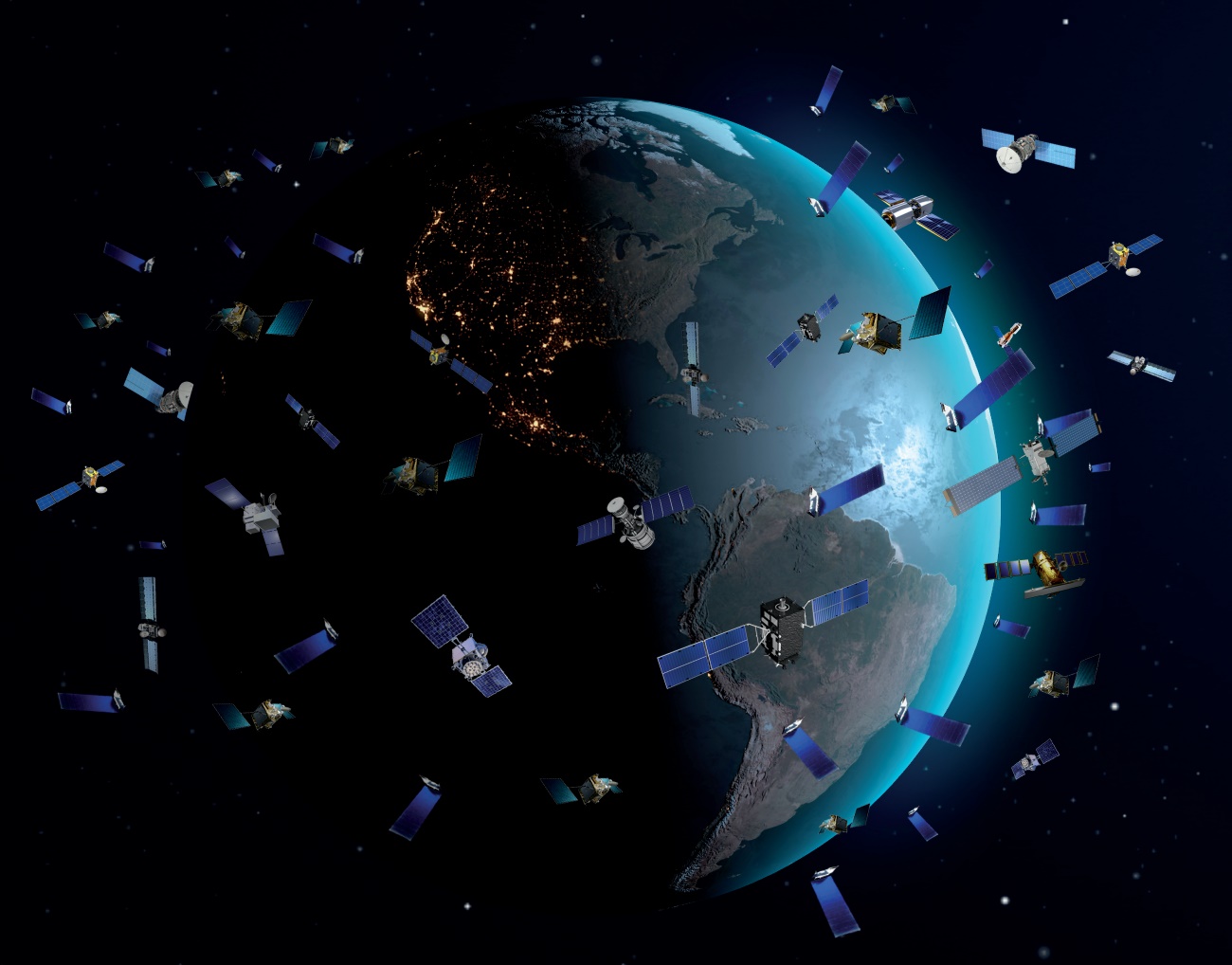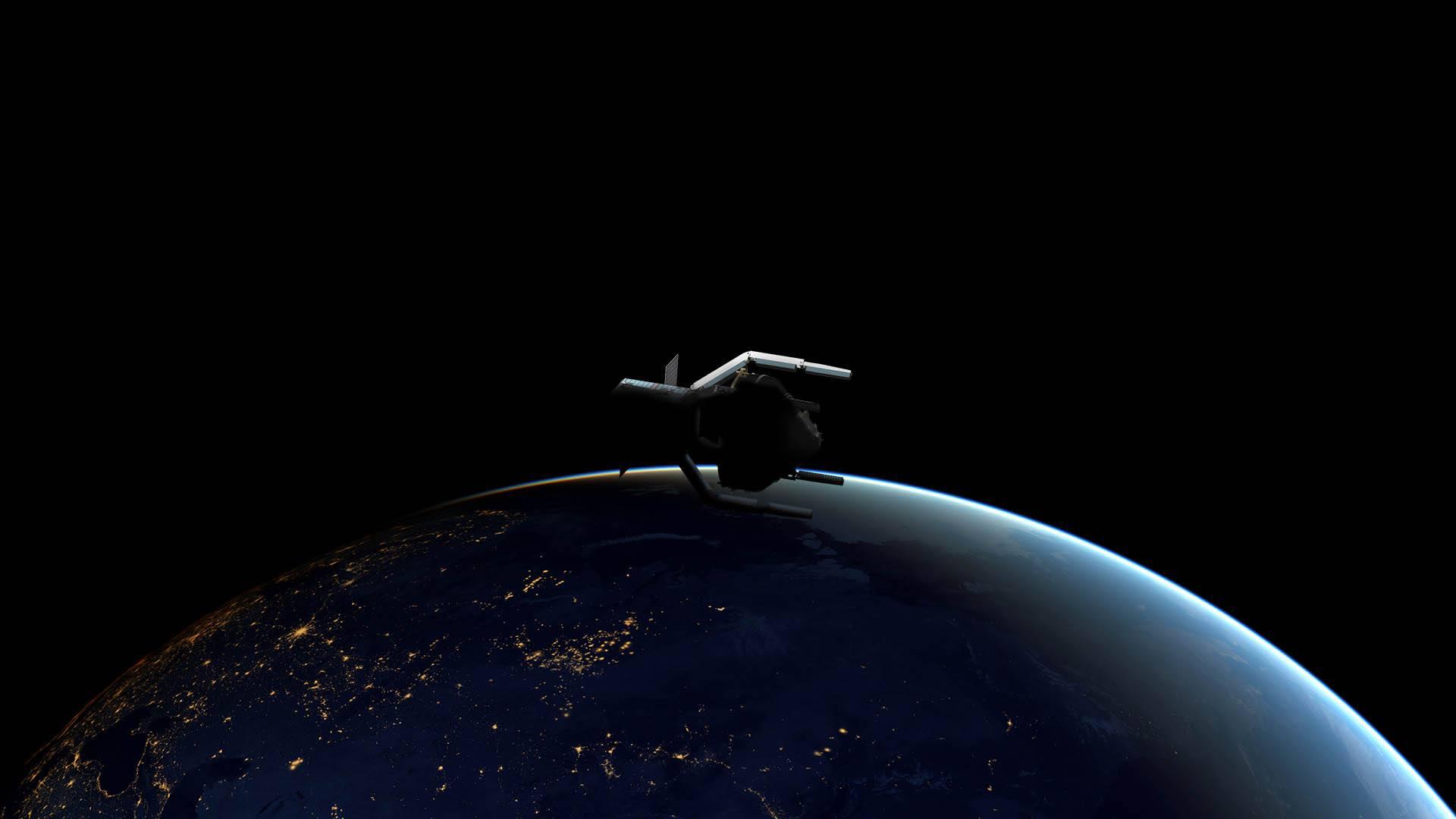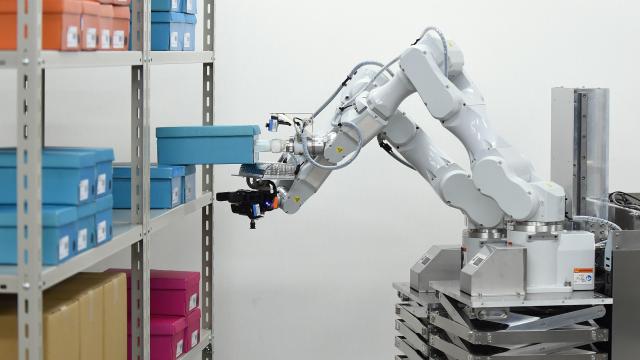How space debris created the world’s largest garbage dump

- Space debris is any human-made object that’s currently orbiting Earth.
- When space debris collides with other space debris, it can create thousands more pieces of junk, a dangerous phenomenon known as the Kessler syndrome.
- Radical solutions are being proposed to fix the problem, some of which just might work. (See the video embedded toward the end of the article.)
In 1957, the Soviet Union launched a human-made object into orbit for the first time. It marked the dawn of the Space Age. But when Sputnik 1’s batteries died and the aluminum satellite began lifelessly orbiting the planet, it marked the end of another era: the billions of years during which space was pristine.
Today, the space above Earth is the world’s “largest garbage dump,” according to NASA. It’s littered with 8,000 tons of human-made junk, called space debris, left by space agencies over the past six decades.
The U.S. now tracks more than 25,000 pieces of space junk. And that’s only the debris that ground-based radar technologies can track. The U.S. Space Surveillance Network estimates there could be more than 170 million pieces of space debris currently orbiting Earth, with the majority being tiny fragments smaller than 1 mm.
Space debris: Trashing a planet
Space debris includes all human-made objects, big and small, that are orbiting Earth but no longer serve a useful function. A brief inventory of known space junk includes: a spatula, a glove, a mirror, a bag filled with astronaut tools, spent rocket stages, stray bolts, paint chips, defunct spacecraft, and about 3,000 dead satellites — all of which are orbiting Earth at speeds of roughly 18,000 m.p.h.
By allowing space debris to accumulate unchecked, we could be building a prison that keeps us stranded on Earth for centuries.
Most space junk is floating in low Earth orbit (LEO), the region of space within an altitude of about 100 to 1,200 miles. LEO is also where most of the world’s 3,000 satellites operate, powering our telecommunications, GPS technologies, and military operations.
“Millions of pieces of orbital debris exist in low Earth orbit (LEO) — at least 26,000 the size of a softball or larger that could destroy a satellite on impact; over 500,000 the size of a marble big enough to cause damage to spacecraft or satellites; and over 100 million the size of a grain of salt that could puncture a spacesuit,” wrote NASA’s Office of Inspector General Office of Audits.
If LEO becomes polluted with too much space junk, it could become treacherous for spacecraft, threatening not only our modern technological infrastructure, but also humanity’s ability to venture into space at all.
By allowing space debris to accumulate unchecked, we could be building a prison that keeps us stranded on Earth for centuries.
An outsized problem
Space debris of any size poses grave threats to spacecraft. But tiny, untrackable micro-debris presents an especially dreadful problem: A paint fragment chipped off a spacecraft might not seem dangerous, but it careens through space at nearly 10 times the speed of a bullet, packing enough energy to puncture an astronaut’s suit, crack a window of the International Space Station, and potentially destroy satellites.
Impacts with space debris are common. During the Space Shuttle era, NASA replaced an average of one to two shuttle windows per mission “due to hypervelocity impacts (HVIs) from space debris.” To be sure, some space debris are natural micrometeoroids. But much of it is human-made, like the fragment that struck the starboard payload bay radiator of the STS-115 flight in 2006.

“The debris penetrated both walls of the honeycomb structure, and the shock wave from the penetration created a crack in the rear surface of the radiator 6.8 mm long,” NASA wrote. “Scanning electron microscopy and energy dispersive X-ray detection analysis of residual material around the hole and in the interior of the radiator shows that the impactor was a small fragment of circuit board material.”
The European Space Agency notes that any fragment of space debris larger than a centimeter could shatter a spacecraft into pieces.

Impact chip on the ISS
Credit ESATo dodge space junk, the International Space Station (ISS) has to conduct “avoidance maneuvers” a couple times every year. In 2014, for example, flight controllers decided to raise the ISS’s altitude by half a mile to avoid collision with part of an old European rocket in its orbital path.
NASA has strict guidelines for how it decides to perform these maneuvers.
“Debris avoidance maneuvers are planned when the probability of collision from a conjunction reaches limits set in the space shuttle and space station flight rules,” NASA wrote. “If the probability of collision is greater than 1 in 100,000, a maneuver will be conducted if it will not result in significant impact to mission objectives. If it is greater than 1 in 10,000, a maneuver will be conducted unless it will result in additional risk to the crew.”
These precautionary measures are becoming increasingly necessary. In 2020, the ISS had to move three times to avoid potential collisions. One of the latest close-calls came with such little warning that astronauts were instructed to take shelter in the Russian segment of the space station, in order to be closer to their Soyuz MS-16 spacecraft, which serves as an escape pod in case of an emergency.
The Kessler syndrome
The hazards of space debris grow exponentially over time. That’s because of a problem that NASA scientist Donald J. Kessler outlined in 1978. The so-called Kessler syndrome states that as space becomes increasingly packed with spacecraft and debris, collisions become more likely. And because each collision would create more debris, it could trigger a chain reaction of collisions — potentially to the point where near-Earth space becomes a shrapnel field through which safe travel is impossible.
A paint fragment chipped off a spacecraft might not seem dangerous, but it careens through space at nearly 10 times the speed of a bullet, packing enough energy to puncture an astronaut’s suit, crack a window of the International Space Station, and potentially destroy satellites.
The Kessler syndrome may already be playing out. Perhaps it began with the first known case of a spacecraft being severely damaged by artificial space debris, which occurred in 1996 when the French spy satellite Cerise was struck by a piece of an old European Ariane rocket. The collision tore off a 13-foot segment of the satellite.
The next major space debris incident occurred in 2007 when China conducted an anti-satellite missile test in which the nation destroyed one of its own weather satellites, triggering international criticism and creating more than 3,000 pieces of trackable space debris, most of which was still in orbit ten years after the explosion.
Then, in 2009, an unexpected collision between communications satellites — the active Iridium 33 and the defunct Russian Cosmos-2251 — produced at least 2,000 large fragments of space debris and as many as 200,000 smaller pieces, according to NASA. About half of all space debris currently orbiting Earth came from the Iridium-Cosmos collision and China’s missile test.
There’s more. Russia’s BLITS satellite was spun out of its orbital path in 2013 after being struck by a piece of space debris suspected to have come from China’s 2007 missile test; the European Space Agency’s Copernicus Sentinel-1A satellite was struck by a tiny particle in 2016; and a window of the ISS was hit by a small fragment that same year.
As nations and private companies plan to send more satellites into orbit, collisions and impacts could soon become more common.
The promise and peril of satellite mega-constellations
Space organizations have recently begun launching satellites into low Earth orbit at an unprecedented pace. The goal is to create “mega-constellations” of satellites that provide high-quality internet access to virtually all parts of the planet.
Internet-providing satellites have existed for years, but they’re typically expensive and provide slower service than land-based internet infrastructure. That’s mainly because it can take a relatively long time for a signal to travel from the satellite to the user due to the high altitudes at which many of these satellites float above us in geostationary orbit.
China and companies like SpaceX, OneWeb, and Amazon aim to solve this problem by launching thousands of satellites into lower orbits in order to reduce signal latency, or the time it takes for the signal to travel to and from the satellite. But some space experts worry satellite mega-constellations could create more space debris.
“We face entirely new challenges as hundreds of satellites are launched every month now — more than we used to launch in a year,” Thomas Schildknecht of the International Astronomical Union said at a European Space Agency conference in April. “The mega-constellations are producing huge risks of collisions. We need more stringent rules for traffic management in space and international mechanisms to ensure enforcement of the rules.”
A 2017 study funded by the European Space Agency found that the deployment of satellite mega-constellations into low Earth orbit could increase the number of catastrophic collisions by 50 percent. Still, it remains unclear whether sending more satellites into space will necessarily cause more collisions.
SpaceX, for example, claims that Starlink satellites aren’t at significant risk of collision because they’re equipped with automated collision-avoidance propulsion systems. However, this system seemed to fail in 2019 when a Starlink satellite had a close call with a European science satellite named Aeolus. The company later said it had fixed the bug.

A batch of 60 Starlink test satellites stacked atop a Falcon 9 rocket.
Credit SpaceXCurrently, there are no strict international rules governing the deployment and management of satellite mega-constellations. But there are some international efforts to curb space debris risks.
The most concerted effort is the Inter-Agency Space Debris Coordination Committee (IADC), a forum that comprises 13 of the world’s space agencies, including those of the U.S., Russia, China, and Japan. The committee aims “to exchange information on space debris research activities between member space agencies, to facilitate opportunities for cooperation in space debris research, to review the progress of ongoing cooperative activities, and to identify debris mitigation options.”
The IADC’s Space Debris Mitigation Guidelines list three broad goals:
1. Preventing on-orbit break-ups
2. Removing spacecraft from the densely populated orbit regions when they reach the end of their mission
3. Limiting the objects released during normal operations
But even though the world’s space agencies recognize the gravity of the space debris problem, they’re reluctant to act because of an incentives-based dilemma.
Space debris: A classic tragedy of the commons
Space debris is everyone’s problem, but no one entity is obligated to solve it. It’s a tragedy of the commons — an economic scenario in which individuals with access to a shared and scarce resource (space) act in their own best interest (spend the least amount of money). Left unchecked, the shared resource is vulnerable to depletion or corruption.
For example, the U.S. by itself could develop a novel method for removing space debris, which, if successful, would benefit all organizations with assets in space. But the odds of this happening are slim because of a game-theoretical dilemma.
A 2018 study published in Frontiers in Robotics and AI explains:
“[In space debris removal] each stakeholder has an incentive to delay its actions and wait for others to respond. This makes the space debris removal setting an interesting strategic dilemma. As all actors share the same environment, actions by one have a potential immediate and future impact on all others. This gives rise to a social dilemma in which the benefits of individual investment are shared by all while the costs are not. This encourages free-riders, who reap the benefits without paying the costs. However, if all involved parties reason this way, the resulting inaction may prove to be far worse for all involved. This is known in the game theory literature as the tragedy of the commons.”
Similar to trying to curb climate change, there’s no clear answer on how to best incentivize nations to mitigate space debris. (For what it’s worth, the game theoretical model in the 2018 study found that a centralized solution — e.g., one where a single actor makes decisions on mitigating space debris, perhaps on behalf of a multinational coalition — is less costly than a decentralized solution.)
Although space organizations have been slow to act, many have been exploring ways to remove space junk from orbit and prevent new debris from forming.
Cleaning up space debris
Space organizations have proposed and experimented with many ways to remove debris from space. Although the techniques vary, most agree on strategy: get rid of the big stuff first.
That’s because collisions involving large objects would create lots of new debris. So, removing big debris first would simultaneously clean up low Earth orbit and slow down the phenomenon of cascading collisions described by the Kessler syndrome.
To clean up low Earth orbit, space organizations have proposed using:
- Electrodynamic tethers: In 2017, the Japanese Aerospace Exploration Agency attempted to remove space debris by outfitting a cargo ship with an electrodynamic tether — essentially a fishing net made of stainless steel and aluminium. The craft then tried to “catch” space debris with the aim of dragging it into lower orbit, where it would eventually crash to Earth. The experiment failed.
- Ultra-thin nets: NASA’s Innovative Advanced Concepts program has funded research for a project that would deploy extremely thin nets designed to wrap around space debris and drag them down to Earth’s atmosphere.
- “Laser brooms”: Since the 1990s, space researchers have proposed using ground-based lasers to strategically heat one side of a piece of space debris, which would change its orbit so that it re-enters Earth’s atmosphere sooner. Because the laser systems would be based on Earth, this strategy could prove to be relatively affordable.
- Drag sails: As a relatively passive way to accelerate the de-orbit of space junk, NASA and other space organizations have been exploring the viability of attaching sails to space junk that would help guide debris back to Earth. These sails could either be packed within new satellites, to be deployed once the satellites are no longer useful, or attached to existing space junk.

Illustration of Brane Craft Phase II, which would use thin nets to capture space debris.
Credit Siegfried Janson via NASAClearSpace-1
But perhaps one of the most promising solutions for space debris is the ESA-funded ClearSpace-1 mission. Set to launch in 2025, ClearSpace-1 intends to be the first mission that successfully removes space debris from orbit. The goal is to launch a satellite into orbit and rendezvous with the upper stage of Europe’s Vega launcher, which was left in space after a 2013 flight.
Once the satellite meets up with the debris, it will try to capture the junk with a robotic arm and then perform a controlled atmospheric reentry. The task will be challenging, in part because space junk tumbles as it flies above Earth, meaning the satellite will have to match its movements in order to safely capture it.
Freethink recently spoke to the ClearSpace-1 team to get a better understanding of the mission and its challenges.
But not all space debris removal strategies center on technology. A 2020 paper published in PNAS argued that imposing taxes on each satellite in orbit would be the most effective way to clean up space. Called “orbital use fees,” the plan would charge space organizations an annual fee of roughly $235,000 per each satellite that’s in orbit. The fee would, in theory, incentivize nations and companies to declutter space over time.
The main hurdle of orbital-use fees is getting all of the world’s space organizations to agree to such a plan. If they do, it could help eliminate the tragedy of the commons aspect of space debris and potentially quadruple the value of the space industry by 2040.
“The costly buildup of debris and satellites in low-Earth orbit is fundamentally a problem of incentives — satellite operators currently lack the incentives to factor into their launch decisions the collision risks their satellites impose on other operators,” the researchers wrote. “Our analysis suggests that correcting these incentives, via an OUF, could have substantial economic benefits to the satellite industry, and failing to do so could have substantial and escalating economic costs.”
No matter the solution, cleaning up space debris will be a complex and expensive challenge that requires a coordinated, international effort. If the global community wants to maintain modern technological infrastructure and venture deeper into space, conducting business as usual isn’t an option.
“Imagine how dangerous sailing the high seas would be if all the ships ever lost in history were still drifting on top of the water,” Jan Wörner, European Space Agency (ESA) director general, said in a statement. “That is the current situation in orbit, and it cannot be allowed to continue.”





